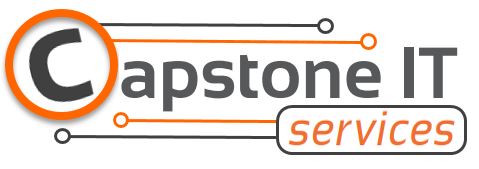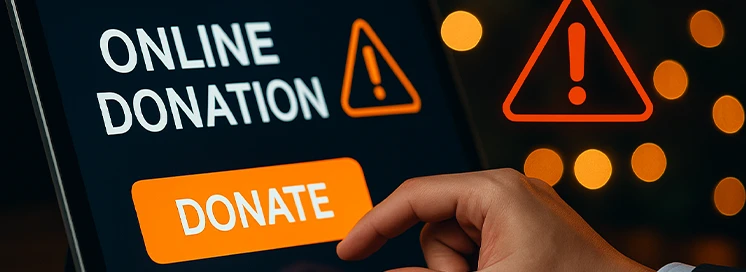As your trusted IT & security partner in South Florida, Capstone IT wants to ensure your holiday giving remains generous — not risky. During the holidays especially, when your business supports causes, scammers circle around generosity. A few years ago, a massive tele-funding fraud pulled in over $110 million from unsuspecting donors. And on social media alone, more than 800 accounts were found running fake fundraisers, according to researchers at Cornell University.
For a small or mid-sized business — especially in law, finance, manufacturing or non-profit services on the Treasure Coast and Palm Beaches — one misstep in charitable giving can cost more than money. It can damage your reputation, erode trust with clients and partners, and drag your brand into a fraud story.
Here’s how to vet fundraisers, spot red flags, and protect your business — and goodwill — this season.
How to Vet a Fundraiser Before You Donate
Before approving corporate donations or encouraging employee giving under your business name, make sure the fundraiser can answer these questions:
- Who is organizing it, and what’s their connection to the recipient?
- How will the funds be used, and over what timeline?
- Who controls the withdrawals? Is there a clear path for funds to reach the target?
- Do close contacts (family, friends, colleagues) publicly support the campaign?
If any of the answers are vague or missing — pause. Ask for clarification, then verify. Evasive responses are a red flag.
Red Flags That Often Signal Scams
Watch for warning signs like:
- Misleading or false information on the fundraising page
- Funds being redirected or not used for the stated purpose
- Impersonation of someone the business or community knows
- Stories that seem too perfect, overly emotional or urgent
Multiple red flags = stop and investigate further.
Vetting Charities (Not Just Crowdfunds)
Even established charities can have risky practices. When your business gives publicly or uses its brand name, vet like this:
- Check for transparent program descriptions, audited annual reports and clear financial breakdowns (program vs overhead)
- Search the charity’s name plus words like “fraud,” “complaints,” or “reviews”
- Avoid charities where details are missing or negative press appears
Common Tactics Charity Scammers Use
Scammers love the season of giving — here are their favorite tactics:
- Asking for donations via gift cards, wires or cryptocurrency — legitimate charities typically accept cards, checks or credit cards
- Websites lacking “https” or with suspicious URLs — insecure data transmission is a red flag
- High-pressure appeals stressing urgency (“Donate now or it’s gone!”)
- Messages stating you already pledged or gave when you don’t remember
These tactics overlap strongly with business fraud, phishing, invoice scams and wire transfer fraud — making this awareness critical for your team.
Why This Matters for Your Business
When your business publicly supports a cause, it becomes part of your brand story. A misstep can lead to:
- Associating your company name with a scam
- Legal/regulatory exposure if your industry (law, finance, manufacturing) has strict compliance standards
- Employee giving under your business name being hijacked by scammers
- Internal culture issues — if your team isn’t trained, you risk larger security problems
How to Protect Your Business (and Your Goodwill)
Use these five steps to secure your giving:
- Donation Policy for Your Business: Define how and where you donate, set approval thresholds, require pre-screening.
- Employee Awareness: Educate your team on fake fundraisers, phishing, wire fraud and how charity scams can target businesses too.
- Use Trusted Channels: Encourage donations via reputable charity websites, not through unverified links or social media posts.
- Transparency: If you publicise your giving, ensure the charity is legitimate and you can verify how funds are used.
- Ongoing Monitoring: After giving, follow up. Many charities publish impact reports — review them. Ensure your business reputation is protected.
Keep Your Holidays Generous — Not Risky
The season of giving should align with the season of careful oversight. Smart checks and policies mean your business stays in control — not the victims of fraud.
Want your team to be trained on how to spot fake fundraisers, phishing emails or bogus payment requests? Book a free discovery call with Capstone IT.
Because the best gift you can give your business, your clients and your community this holiday season is trust that cannot be taken.

